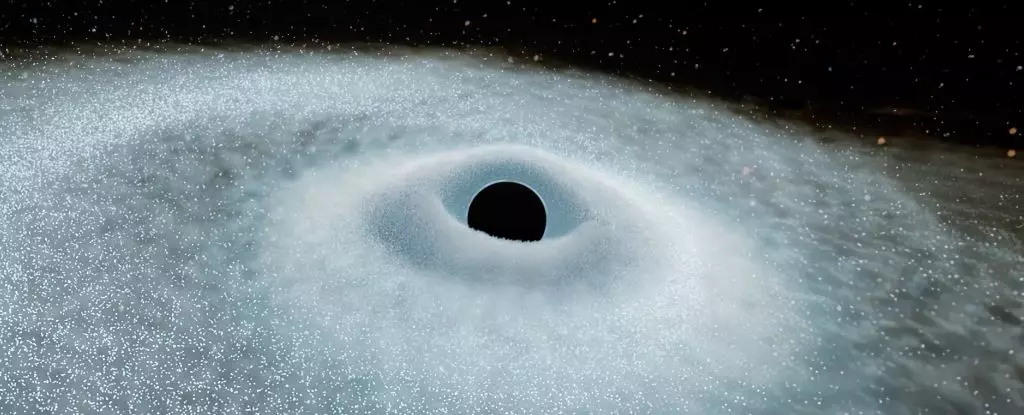An exhilarating leap in astrophysical research has emerged from an unexpected corner of the universe: the Gaia space telescope. This remarkable observatory, originally tasked with mapping our own galaxy, has serendipitously captured never-before-seen cosmic phenomena that are catapulting our understanding of the universe into uncharted territory. The discoveries of extreme nuclear transients (ENTs), colossal outbreaks of energy likened to the most significant cosmic events since the Big Bang, are rewriting the rules of astrophysics. The intricate dance of black holes and stars is now illuminated in ways we could only begin to imagine.
The Nature of Extreme Nuclear Transients
The intensity of these events is astounding. As reported by seasoned astrophysicists, ENTs can unleash as much energy as 100 Suns throughout their entire lifetimes, radiating brightness levels nearly ten times higher than the typical tidal disruption events (TDEs) we have previously observed. To grasp the magnitude of these phenomena, one must understand the typical lifecycle of stars approaching black holes, where gravitational forces stretch and tear celestial bodies apart. However, these ENTs are not mere echoes of past events; they present a new dimension that dramatically challenges our conventional understanding of astrophysical explosions.
Tidal disruption events, as previously classified, generally exhibit a rapid rise and subsequent decay in luminosity, akin to Stanley Kubrick’s cinematic explosions. However, ENTs present an extended brightness that endures for several years, long surpassing the lifespan of the most formidable supernova explosions. This extended visibility opens a cosmic window, allowing astronomers to scrutinize the physical properties of these phenomenal occurrences and the mechanics behind them.
Gaia’s Role in Unraveling Cosmic Secrets
The Gaia telescope was primarily designed to create a three-dimensional map of the Milky Way galaxy, meticulously cataloging star positions through precise parallax measurements. Yet, within this mission, Gaia inadvertently captured fleeting moments of cosmic drama that invite us to rethink established theories. Specifically, two significant cosmic flares—Gaia16aaw and Gaia18cdj—were recorded in 2016 and 2018, respectively. These events closely resemble an extraordinarily powerful flare observed by the Zwicky Transient Facility in 2020. This particular flare, whimsically dubbed “Scary Barbie,” has compelled astrophysicists to refine the categorization of these dazzling explosions.
The team led by Jason Hinkle from the University of Hawai’i’s Institute for Astronomy discovered that the properties of these recent events align seamlessly with TDEs but with a phenomenal twist. Instead of merely extending conventional wisdom, ENTs appear to represent an exceptional scaling up of previously understood phenomena. The sheer energy output exhibited by these explosions provokes profound questions about the growth mechanisms of supermassive black holes that lie at the heart of most galaxies.
Challenging Conventional Wisdom
The implications of these findings beckon us to re-evaluate not only the fundamental characteristics of ENTs but also the larger framework of black hole physics. Historically, supernovae have set the luminosity benchmark for cosmic explosions, establishing an upper limit that astronomers held as a template for understanding more extreme events. In examining ENTs, researchers discern a rare yet significant process where black holes can gain mass through consuming large surrounding stars.
The rarity of these occurrences—estimated to be about ten million times less common than supernovae—presents a double-edged sword in astrophysics. While their scarcity may limit observational opportunities, their brightness empowers scientists with the ability to detect and study them from profound cosmological distances, further enriching our comprehension of the fundamental properties of black holes across the universe.
A Bright Future for Cosmic Research
As astronomers continue to sift through vast archives of data, the potential for further revelations looms large. ENTs signify a breakthrough, not merely in terms of cataloging brighter astronomical events but in bridging gaps between existing theories and newfound realities. They provide a unique touchstone for understanding the formation and evolution of supermassive black holes, pushing the boundaries of our cosmic knowledge while revealing hidden facets of gravity’s dark dominion.
The fascination with these events rests not only in their scientific significance but also in their reflective power. They encourage humanity to look outward with curiosity and wonder, to appreciate the unfathomable reach of existence, and to marvel at the intricate workings of the universe. In our pursuit of knowledge, the cosmos throws new challenges that inspire us to continue asking questions—a discovery that, in itself, is one of the greatest adventures of all.


Leave a Reply